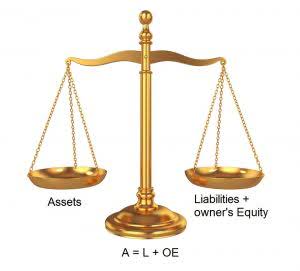
In the above example, we assumed a depreciation rate equal to twice the straight-line rate. However, many firms use a rate equal to 1.5 times the straight-line rate. Accelerated depreciation techniques charge a higher amount of depreciation in the earlier years of an asset’s life. One way of accelerating the depreciation expense is the double decline depreciation method. To get a better grasp of double declining balance, spend a little time experimenting with this double declining balance calculator.
- For example, if an asset has a salvage value of $8000 and is valued in the books at $10,000 at the start of its last accounting year.
- The units of output method is based on an asset’s consumption of measurable units.
- We can incorporate this adjustment using the time factor, which is the number of months the asset is available in an accounting period divided by 12.
- Let’s assume that a retailer purchases fixtures on January 1 at a cost of $100,000.
- This process continues annually, with the book value decreasing as depreciation accumulates.
- You calculate 200% of the straight-line depreciation, or a factor of 2, and multiply that value by the book value at the beginning of the period to find the depreciation expense for that period.
Step 1 of 3
Here’s the depreciation schedule for calculating the double-declining depreciation expense and the asset’s net book value for each accounting period. In case of any confusion, you can refer to the step by step explanation of the process below. First-year depreciation expense is calculated by multiplying the asset’s full cost by the annual rate of depreciation and time factor. Common mistakes in applying this formula include overlooking the correct book value, underestimating or double declining balance method overestimating the asset’s useful life, and failing to account for salvage value limits. The straight-line method, for instance, is easier to calculate but doesn’t account for varying usage rates.
- At the beginning of the second year, the fixture’s book value will be $80,000, which is the cost of $100,000 minus the accumulated depreciation of $20,000.
- Now you’re going to write it off your taxes using the double depreciation balance method.
- Note, there is no depreciation expense in years 4 or 5 under the double declining balance method.
- These points are illustrated in the following schedule, which shows yearly depreciation calculations for the equipment in this example.
- Multiply this rate by the asset’s book value at the beginning of each year to find that year’s depreciation expense.
- A financial professional will offer guidance based on the information provided and offer a no-obligation call to better understand your situation.
Accounts Payable

No depreciation is charged following the year in which the asset is sold. It is important to note that we apply the depreciation rate on the full cost rather than the depreciable cost (cost minus salvage value). In this case, the DDB method helps reflect normal balance the machinery’s intense early usage, gradually reducing expenses as its productivity decreases. This pattern continues until the book value approaches the salvage value, ensuring depreciation never exceeds the asset’s worth. To create a depreciation schedule, plot out the depreciation amount each year for the entire recovery period of an asset.

Declining Balance Method of Depreciation Explained in Video
This approach helps businesses calculate how much value their assets lose over time. It’s important to understand how this method works, especially if you’re studying accounting or managing finances. We will cover everything from the basics to examples, making it easy for anyone to grasp. The benefit of using an accelerated depreciation method like the double declining balance is two-fold. A variation on this method is the 150% declining balance method, which substitutes 1.5 for the 2.0 figure used in the calculation.

We empower accounting teams to work more efficiently, accurately, and collaboratively, enabling Airbnb Accounting and Bookkeeping them to add greater value to their organizations’ accounting processes. Consider a scenario where a company leases a fleet of cars for its sales team. These cars are crucial for the business, but they also lose value quickly due to high mileage and wear and tear.

The DDB method accelerates depreciation, allowing businesses to write off the cost of an asset more quickly in the early years, which can be incredibly beneficial for tax purposes and financial planning. Under the declining balance methods, the asset’s salvage value is used as the minimum book value; the total lifetime depreciation is thus the same as under the other methods. For a company using this depreciation method, the expense will be higher in the first years of the asset’s useful life and as time goes by, the expense will get smaller and smaller. This method is an essential tool in the arsenal of financial professionals, enabling a more accurate reflection of an asset’s value over time in balance sheets and financial statements. To calculate the depreciation rate for the DDB method, typically, you double the straight-line depreciation rate.
